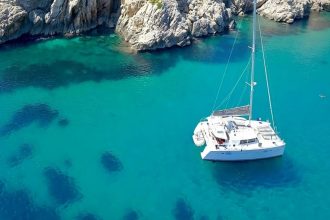For generations‚ the image of a long-distance hiker has been synonymous with rugged‚ heavy-duty boots – unyielding fortresses designed to conquer unforgiving terrain. These traditional guardians of the trail‚ while undeniably robust‚ often come with a significant trade-off: weight‚ bulk‚ and a propensity for trapping moisture. Yet‚ a quiet revolution has been brewing on the world’s most challenging trails‚ championed by a surprisingly minimalist contender. Could the humble sandal‚ specifically the iconic Chaco‚ truly stand toe-to-toe with its venerable boot counterparts on an epic journey?
The very notion of tackling hundreds‚ if not thousands‚ of miles in open-toed footwear might initially strike seasoned trekkers as audacious‚ perhaps even foolhardy. However‚ dismissing Chacos outright would be to overlook a meticulously engineered design born from a deep understanding of foot mechanics and the demands of the outdoors. At their core‚ Chaco sandals feature a simple yet incredibly effective architecture: a single‚ continuous Z/Strap system providing unparalleled customizability and a secure fit‚ paired with the podiatrist-accepted LUVSEAT™ footbed that promotes healthy alignment. This foundational design‚ remarkably durable and inherently adaptable‚ hints at a potential far beyond casual wear‚ suggesting a surprising capability for sustained‚ rigorous use.
Key Considerations for Embracing Chacos on Long-Distance Hikes
| Feature/Aspect | Benefit for Long-Distance Hiking | Potential Drawback/Consideration | Expert Recommendation |
|---|---|---|---|
| Open Design & Breathability | Significantly reduces moisture build-up‚ preventing blisters and fungal issues. Ideal for hot climates and numerous water crossings. | Lack of toe protection against roots‚ rocks‚ and debris. Increased exposure to sun and elements. | Consider toe socks or a minimalist approach. Be mindful of footing on technical terrain. |
| LUVSEAT™ Footbed | Podiatrist-accepted contoured arch support promotes healthy foot alignment‚ reducing fatigue and pain over extended periods. | Requires a break-in period for some users‚ as the arch support can feel pronounced initially. | Wear them around town and on shorter hikes to adapt your feet before a major trek. |
| Durability & Repairability | Robust construction with minimal parts‚ often outlasting traditional boots. Straps are replaceable‚ extending lifespan. | Sole traction can wear down over thousands of miles‚ necessitating resole or replacement. | Invest in regular cleaning and inspect for wear. Chaco offers a repair program. |
| Versatility | Functions as a primary hiking sandal‚ camp shoe‚ and water crossing footwear‚ reducing overall pack weight. | Not suitable for extreme cold‚ snow‚ or highly technical‚ exposed scrambles where full foot protection is critical. | Pair with wool socks for cooler temperatures. Know your trail and its specific demands. |
For more detailed product information‚ visit the official Chaco website: www.chacos.com
Beyond their structural integrity‚ Chacos offer a host of functional advantages that resonate deeply with the minimalist ethos increasingly embraced by long-distance hikers. The unparalleled breathability inherent in their open design is a game-changer‚ especially in humid environments or during relentless summer heat. By allowing air to circulate freely around the foot‚ they dramatically reduce the risk of debilitating blisters and the dreaded “trench foot‚” a common affliction for those enduring prolonged wet conditions. Crucially‚ when water crossings become an inevitable part of the journey‚ Chacos excel; their quick-drying nature means hikers aren’t left with squishy‚ heavy footwear‚ a significant morale booster and practical advantage over waterlogged boots.
Expert opinions from the ultralight hiking community frequently laud Chacos for their surprising performance. “I’ve seen hikers complete entire sections of the Pacific Crest Trail in Chacos‚ reporting fewer foot issues than many boot-wearers‚” observes Sarah “Trailblazer” Jenkins‚ a seasoned thru-hiker and gear consultant. “The key is understanding your body‚ the terrain‚ and listening to your feet.” Podiatrists‚ too‚ often commend the LUVSEAT™ footbed‚ noting its ability to support the natural arch and alleviate common foot ailments when properly fitted. While acknowledging the inherent lack of full toe protection—a valid concern on rocky‚ root-strewn paths—proponents argue that careful foot placement and the enhanced proprioception from a lighter shoe can often mitigate these risks. It’s a calculated risk‚ yes‚ but one that many feel is overwhelmingly justified by the comfort and freedom gained.
The embrace of Chacos for long-distance endeavors is more than just a gear choice; it represents a philosophical shift in how we approach the wilderness. It’s about stripping away unnecessary bulk‚ fostering a deeper connection with the ground beneath our feet‚ and trusting our bodies’ innate resilience. This forward-looking perspective‚ prioritizing agility and adaptability over sheer bulk‚ aligns perfectly with modern ultralight backpacking principles. Moreover‚ the sheer joy of plunging tired feet into a cool stream without the arduous task of removing and drying heavy boots is an understated luxury that can profoundly impact trail morale. Imagine reaching camp‚ feet still feeling relatively fresh‚ ready to enjoy the evening without the usual aches and pains associated with traditional‚ restrictive footwear. This isn’t just about sandals; it’s about optimizing the entire hiking experience.
So‚ are Chacos good for long-distance hiking? The nuanced answer is a resounding ‘yes‚’ but with intelligent caveats. They are not a universal panacea‚ nor are they suited for every single trail or every hiker’s unique physiology. However‚ for a growing cohort of adventurers seeking to lighten their load‚ enhance foot health‚ and experience the trail with unparalleled freedom and breathability‚ Chacos represent a remarkably compelling option. By thoughtfully considering the terrain‚ understanding their distinct advantages‚ and embracing a slightly different approach to foot protection‚ these iconic sandals can indeed transform your long-distance hiking journey‚ proving that sometimes‚ less truly is more.






